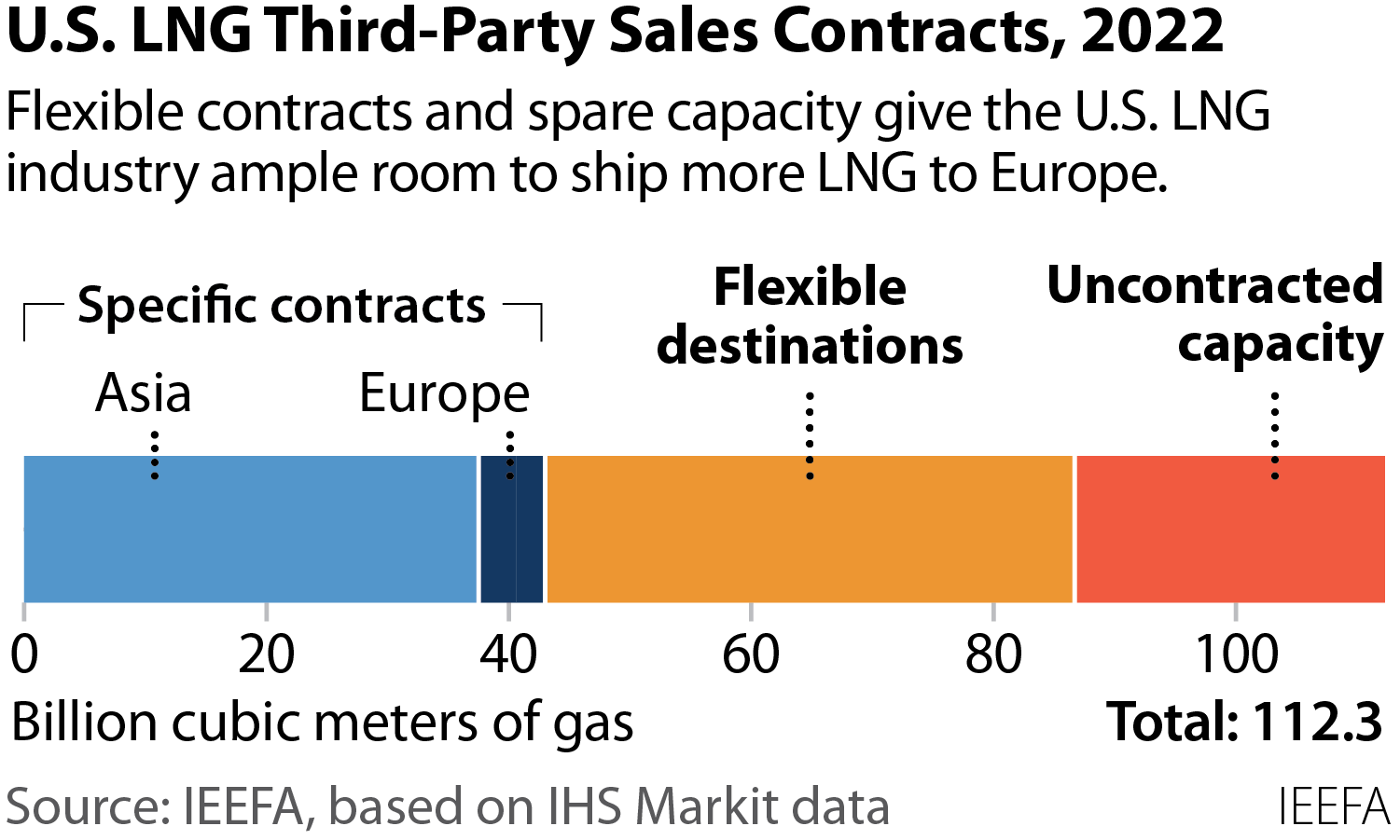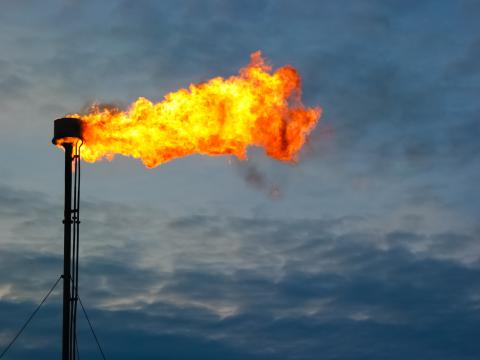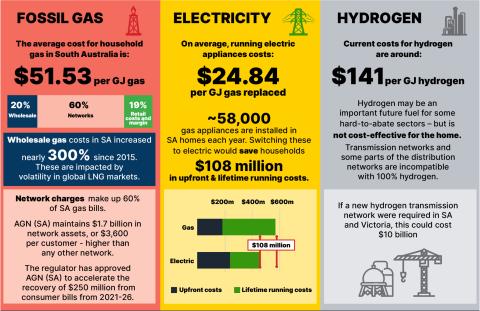Analysis finds U.S. can increase LNG shipments to Europe without building new facilities

April 6, 2022 (IEEFA)—The U.S. can increase shipments of liquefied natural gas (LNG) to Europe that will replace declining gas imports from Russia—without building new plants, according to an analysis by the Institute for Energy Economics and Financial Analysis.
The White House and European leaders announced plans in late March to boost U.S gas shipments to Europe by at least 15 billion cubic meters this year. Although the fossil fuel industry is citing the European energy crisis as reason to build more LNG facilities, the IEEFA analysis found the U.S. LNG industry is on track to far exceed its target, without the construction of any new LNG plants.
“We’ve seen a huge boom in shipments of U.S. LNG to Europe in the first quarter of this year,” said Clark Williams-Derry, an IEEFA energy finance analyst and author of the report. “A combination of increased output from U.S. plants and flexible contracts has allowed much more U.S. LNG to flow to Europe.”
Europe’s appetite for LNG has been boosted by its desire to reduce the continent’s dependence on Russian gas in the wake of its invasion of Ukraine. European leaders hope to replace the Russian supply that provides more than 40 percent of its natural gas imports through demand reduction and, in the short term, through increased LNG purchases.
The increased LNG demand from Europe, however, has helped drive global LNG prices to their highest level in history, with Europe bidding against the rest of the world for a limited supply of LNG. High prices, limited supplies, and cargo cancellations have cooled demand for the fuel in Asia, and may be encouraging emerging economies to rethink their LNG import plans.
Rising LNG exports have also boosted natural gas prices in the U.S. As the country exports more natural gas, it is effectively importing higher prices. Building new plants to supply Europe could make the problem worse, and could also make it difficult for the continent to meet its long-term climate goals.
“Our findings suggest that building new LNG infrastructure in the U.S. could be a long-term financial mistake,” said Williams-Derry. “The U.S. is on track to meet European LNG supply goals using the plants it has, and new plants could face long-term challenges from fickle Asian demand and Europe’s climate commitments.”
Full Report: The U.S. Can Increase LNG Exports to Europe
Author Contact:
Clark Williams-Derry ([email protected]) is an IEEFA energy finance analyst
Media Contact:
Vivienne Heston ([email protected]), +1 (914) 439-8921
About IEEFA: The Institute for Energy Economics and Financial Analysis (IEEFA) examines issues related to energy markets, trends and policies. IEEFA’s mission is to accelerate the transition to a diverse, sustainable and profitable energy economy.












